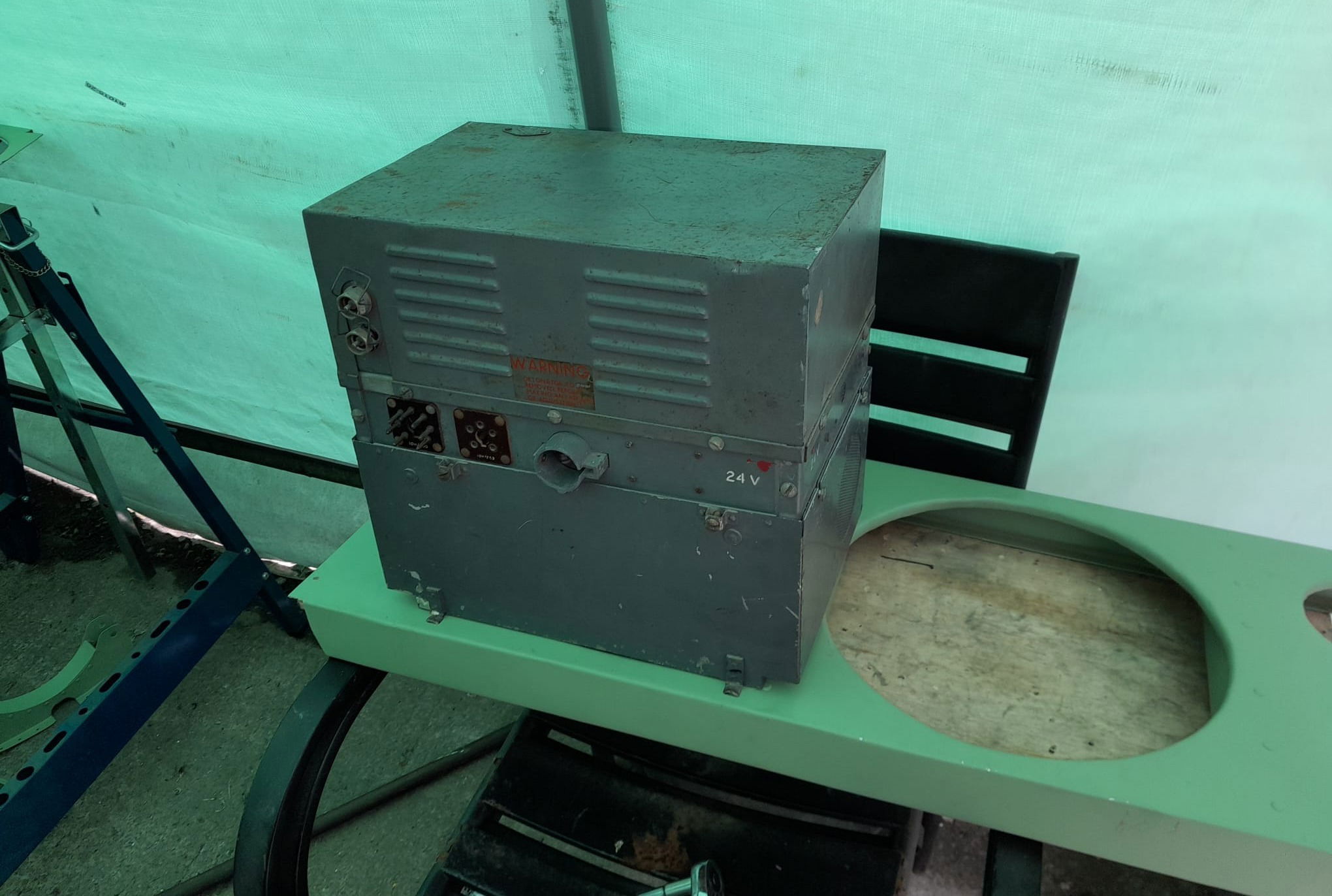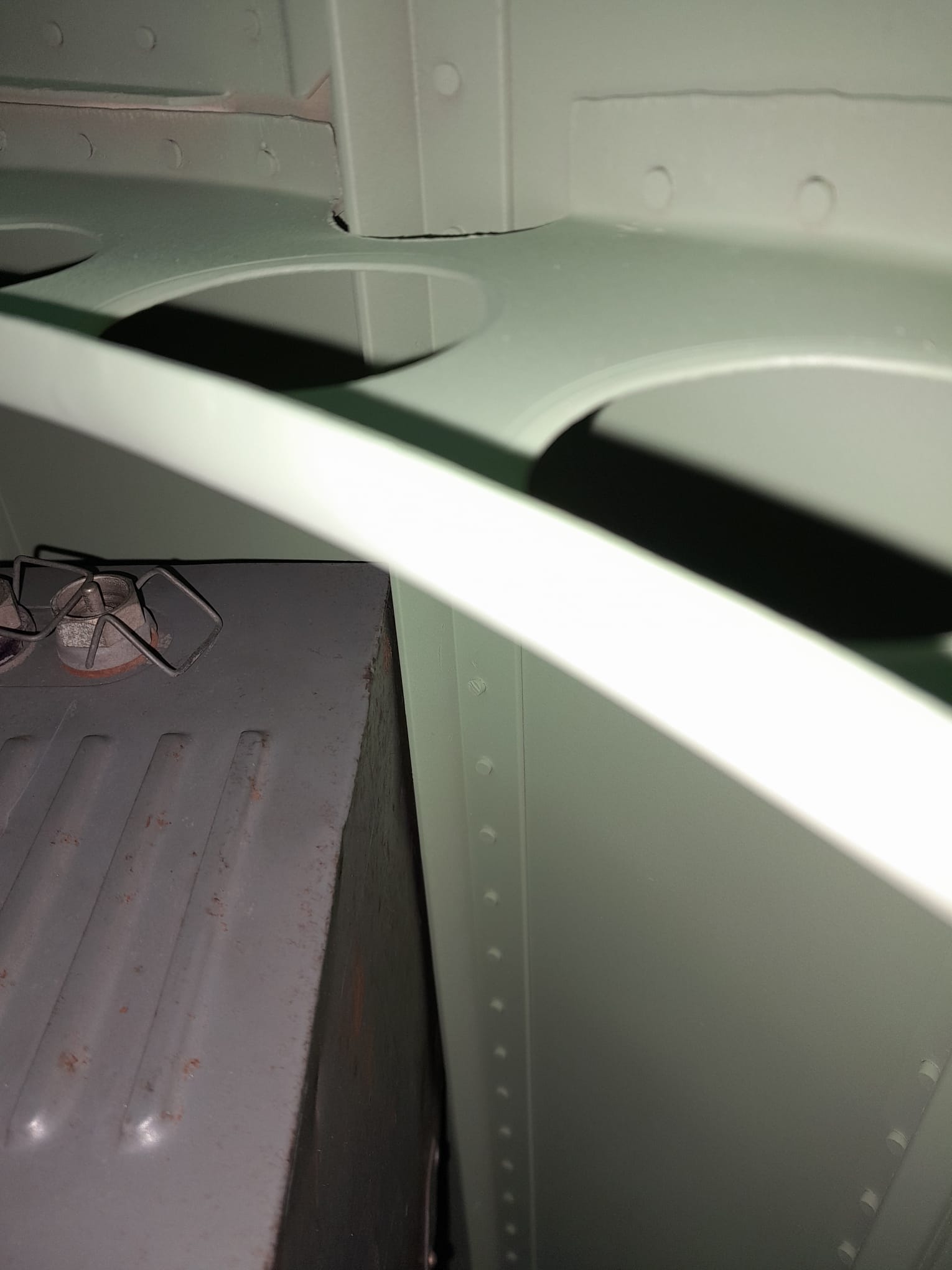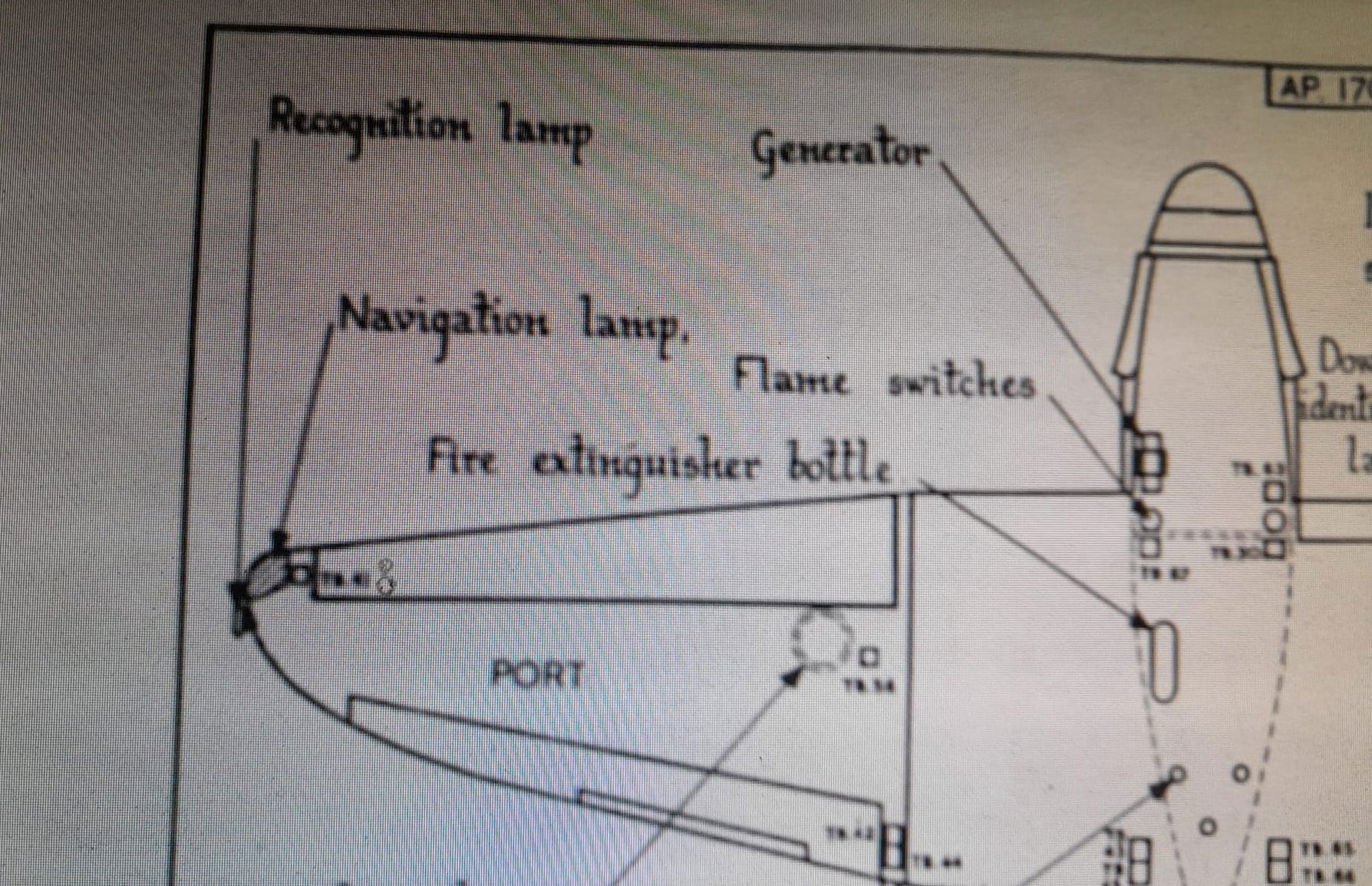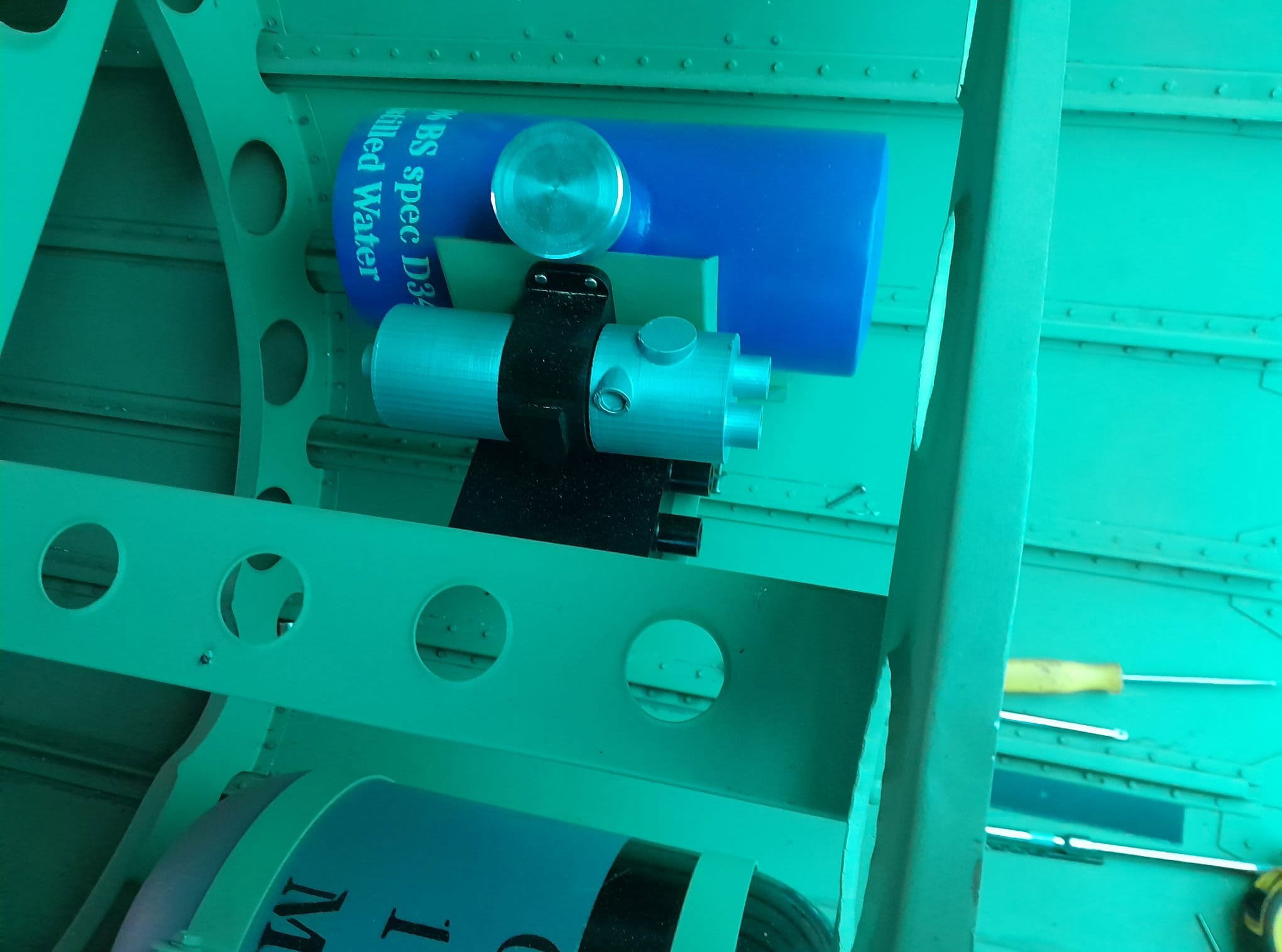Forgotten 'kit'
There are some items that rarely make it to reproductions and restorations, and sometimes disappear from the list of what 'should' be present in an authentic exhibit either because they never were properly documented through secrecy or because they were internal ancillaries with no surviving examples or plans.
Identification Friend or Foe devices, for example, were transponders that picked up radar frequencies and sent an amplified signal back to ground stations. We have made a point of including an authentic IFF (for which we are extremely grateful to Brian Barnes) in the fuselage, working out its location and installation from the images of the Whirlwind IFF tray we found in a bus garage. Images of actual IFF installs are rare, and non-existent in the Whirlwind, such was the secrecy surrounding this equipment at the time.

Indeed it was so secret that, on dry fitting in the only possible position,, we discovered that the installation was irremovable from the structure of the aircraft in the field and rather difficult to even photograph!

Another example is 'resin' lights - secret items that rarely appeared in AP's and equipment lists with any explanation of what they were. leading to decades of confusion and debate. In fact they were identification lights intended to only be visible to other aircraft from the rear quarters and at very close range. The low-power bulbs lit thick, changeably-coloured translucent Perspex blocks that were blinkered' top and bottom. Only to be used in friendly airspace,, they nevertheless never appeared on single-engine types for reasons that are still not clear. Not appearing on Spitfires or Hurricanes made them nearly invisible in fighter lore.

However, the Whirlwind AP lists recognition lamps and something appears at the tips in photos of most examples - but no drawing, cutaway, 3-view or model has ever included them. Nevertheless - P7056 will carry resins, and perhaps be the only aircraft on display in the UK to show them - as with the IFF transponder equipment. Pete Smith worked out what was needed then simply sought some out and purchased them.

Then there is the de-icing equipment - not the standard type (Petter liked to be different), instead it was of a 'Dunlop' design and being buried deep inside the fuselages of only 114 secret-list aircraft, set to remain a mystery - that is until we unearthed a 1938 patent application from Dunlop with some handy schematics and an identical 'form factor' to the outline sketch in the AP. Again, a unique piece, our replica pump was brilliantly 3d printed by Jamie Clark, as were the flare dispenser, radio and batteries.
